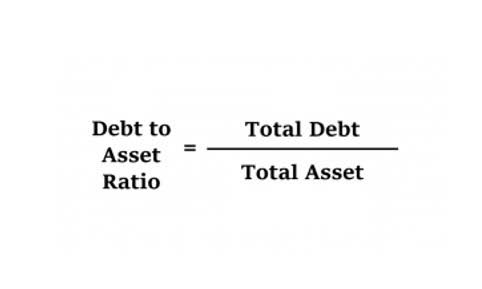Obsolete Inventory: Identification, Prevention, and Solutions

By adopting effective inventory management strategies and staying on top of market trends, businesses can avoid the negative impact of obsolete inventory and keep their operations running smoothly. Businesses often implement strategies to minimize obsolete inventory, such as forecasting demand more accurately, adopting just-in-time inventory systems, and offering promotions to clear out slow-moving stock. These efforts help reduce the risk of accumulating obsolete items and enhance overall inventory management. Generally accepted accounting principles require that estimates for obsolete inventory are reviewed on a regular basis.
Top Ecommerce Inventory Management Strategies for Startups

Try using all the advertising platforms, including social media, email marketing and other tools, to market your fresh sales. To learn more about how ShipBob can help you optimize your supply chain, click the button below to start the conversation. ShipBob is a tech-enabled 3PL that operates a robust logistics network powered by a best-in-class retail fulfillment technology. If that’s the case, you can avoid over-ordering by buying less inventory more often rather than purchasing inventory for an entire year.

Baby Care Product Supplier Financing
Analyze your inventory and identify items contributing disproportionately to your carrying costs. These items may be candidates for clearance sales, discounts, or other strategies to minimize their financial burden. Obsolete inventory must be identified, so that management understands how much of its inventory investment is worthless. This can result in action to dispose of the https://www.bookstime.com/ obsolete items, perhaps returning a small amount of cash to the business.
Effects on Supply Chain and Operations
Hold flash sales, create an outlet store, or dedicate a clearance section on your website. Seasonal or themed sales events can also attract customers and help you move excess stock at a reduced price. Consider rebranding or repackaging products to make them more appealing to customers. You can also target new customer segments by exploring niche markets or demographics that may have been previously overlooked. Limited-time promotions, such as special offers or discounts, can also help generate definition of obsolete inventory interest and encourage sales of slow-moving items. Understanding the causes of obsolete inventory is the first step in mitigating its impact.
- The parameters used in advanced calculations need to be looked at frequently, as supply and demand changes quickly.
- The simplest way to identify obsolete inventory without a computer system is to leave the physical inventory count tags on all inventory items following completion of the annual physical count.
- Once funded, proper allocation becomes vital, highlighting the continued significance of inventory management.
- If the products still have potential, you could also sell them at a discount by running a promotion, such as a flash sale.
- These solutions can help businesses strike the right balance between meeting customer demand and minimizing the risk of excess or obsolete inventory.
However, it is important to be strategic with discounting to avoid further losses. Offering excessive discounts or discounting too frequently can train customers to expect lower prices and erode the product’s perceived value. Additionally, businesses should be careful not to undercut their own profitable inventory by offering discounts that are too steep. Remarketing involves giving products a new marketing campaign and promoting them to a different target audience, in hopes of generating renewed interest in the product and selling it.
Obsolete Inventory Guide: How to Manage and Avoid it?

Inventory refers to assets owned by a business that can be sold for revenue or converted into goods that can be sold for revenue. Generally Accepted Accounting Principles (GAAP) require that any item that represents a future economic value to a company must be defined as an asset. Inventory meets the requirements of an asset so it’s reported at cost on a company’s balance sheet under the section for current assets. For example, if the value of 200 units is initially $10,000, but they have become obsolete, the company may write down the value of these units to $5,000. This will then be reflected in their financial statements as a decrease of $5,000 in the cost of goods sold and assets. If a computer system includes a bill of materials, there is a strong likelihood that it also generates a “where used” report, listing all the bills of material for which an inventory item is used.
These items have become irrelevant or useless for the business and can cause financial and operational problems if they are not properly managed or disposed of. Managing and minimizing obsolete inventory is important to ensure the efficiency and profitability of a business. A write-down is a standard accounting obsolete inventory journal entry used to record the value of the old stock. This write-down is typically done when a company has certain products that are no longer useful and will not be sold. Let us take a closer look at some examples that illustrate the real-world impact of this issue.

- The ebb and flow of consumer tastes, especially in sectors like fashion and home decor, can lead to inventory obsolescence.
- In conclusion, obsolete inventory is a pervasive challenge that can have severe financial and operational consequences for businesses.
- An additional approach for determining whether a part is obsolete is reviewing engineering change orders.
- For example, say your company sells three products, known as products A, B and C.
- Obsolete inventory refers to items in a company’s inventory that are no longer in demand or have lost their market value.
- Companies should regularly assess the effectiveness of their strategies, analyze performance metrics, and seek opportunities for improvement.
- If you do not have an inventory tracking system in place yet, you will need to find ways to track inventory and demands to the best of your ability.
Obsolete inventory is a pervasive issue that plagues businesses across various industries. It not only ties up valuable capital but also imposes significant carrying costs, hampers operational efficiency, and ultimately erodes profitability. In the fast-paced and ever-evolving landscape of modern business, effectively managing obsolete inventory is crucial for maintaining a competitive edge and ensuring long-term sustainability. This https://www.facebook.com/BooksTimeInc/ comprehensive guide delves into the intricate aspects of obsolete inventory, providing a thorough understanding of its implications, root causes, and viable solutions. This is one of the most wide-spread causes, which may result in inventory obsolescence. Incorrect forecasting of customer demand most of the times makes the businesses order more stock than needed.
